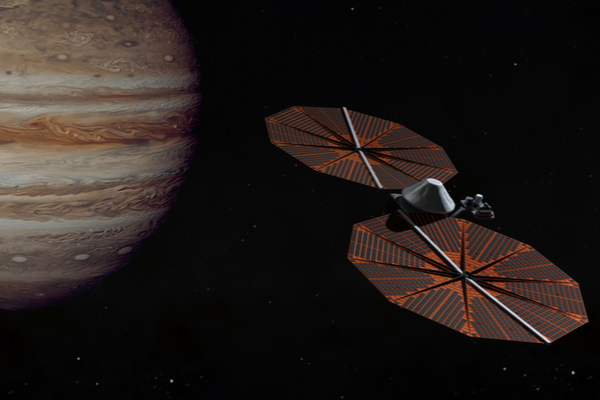When NASA’s Lucy space probe launched successfully from Cape Canaveral in Florida early on Saturday, October 16th, it was the beginning of a 12-year mission to study Jupiter’s Trojan asteroids.
The uncrewed spacecraft lifted off at 5:34AM ET aboard a United Launch Alliance Atlas V rocket. Lucy sent its first signal to Earth from its own antenna to NASA’s Deep Space Network at 6:40AM ET. Scientists believe the Trojan asteroids, which orbit the Sun along the same path as Jupiter, may hold clues about the formation of our solar system. It’s NASA’s first-ever single-spacecraft mission to explore so many different asteroids, the agency said.
Lucy is named for the fossilized human skeleton discovered in Ethiopia in 1974, which provided key insights into human evolution. The fossil got her name from the Beatles song “Lucy in the Sky With Diamonds,” which was playing at the site where excavators found her. NASA says Lucy the spacecraft will provide insights into our evolution much the way her fossil counterpart did, only this time on a planetary scale.
Lucy is on a complicated trajectory that will include three trips back toward Earth for gravity assists. First, Lucy will orbit the Sun and then head back toward Earth next year for a gravity assist. That will accelerate and direct the craft’s trajectory beyond Mars’ orbit, when Lucy will head back toward Earth again for another gravity assist in 2024. This will help propel the craft toward the Donaldjohanson asteroid in 2025; after that Lucy will head toward the Trojan asteroids, arriving in 2027. Then, after four targeted fly-bys, Lucy will head back to Earth for a third gravity assist in 2031, which will propel it toward the Trojans for another encounter in 2033.
—
Photo Credit: murilokleine / Shutterstock.com
